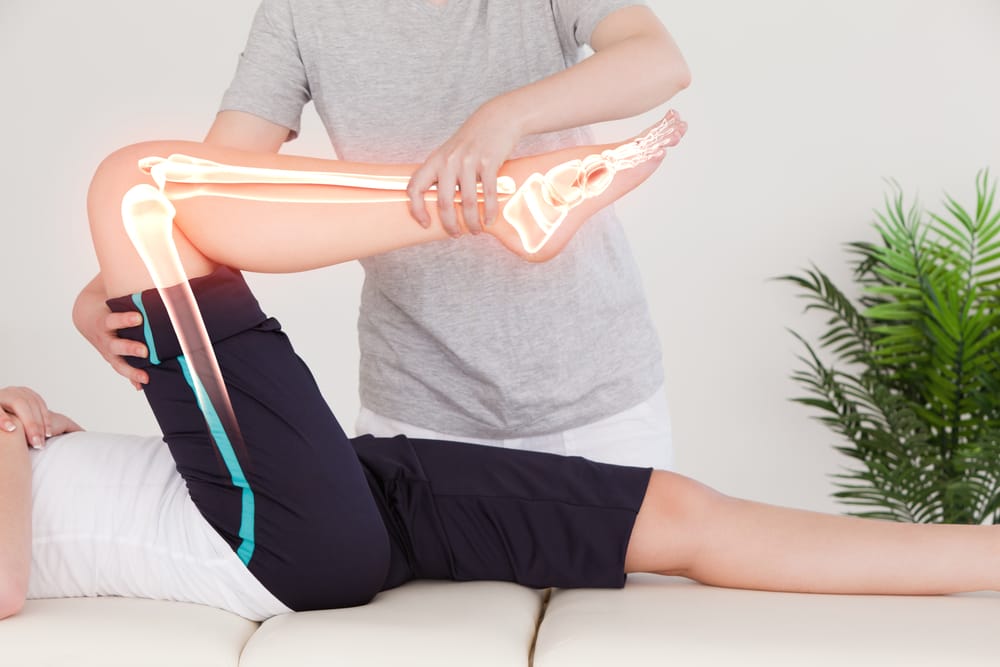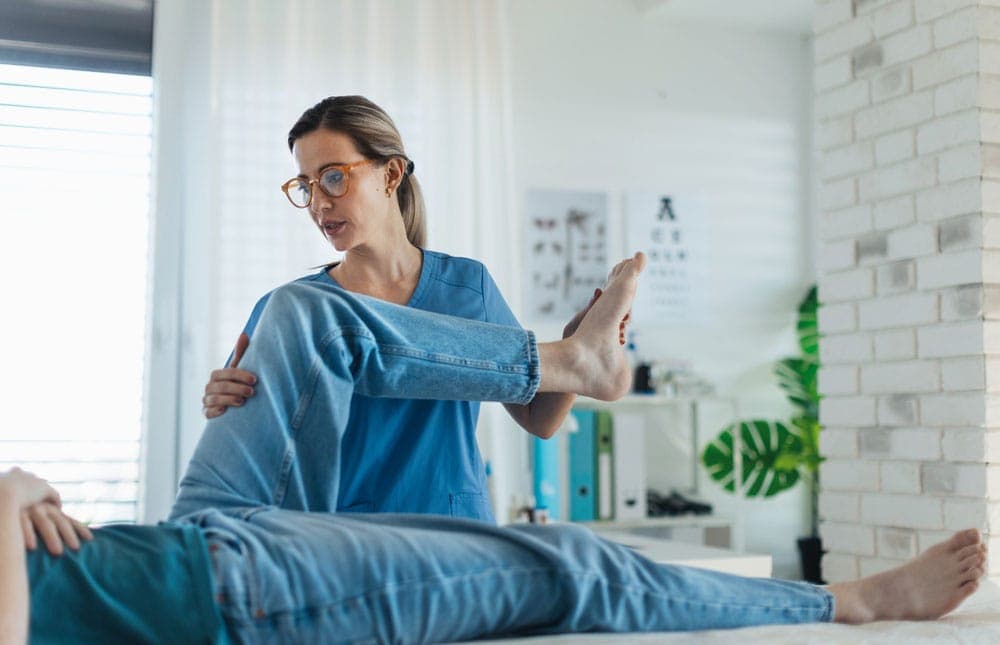How Can You Measure Joint Mobility?
Keep your joints mobile for injury prevention. Learn how to do a mobility test for your shoulders, ankles and hips.
Take a mobility test: Let’s look at the best ways to measure hip, ankle and shoulder mobility.
Why Should You Test Mobility?
In the fitness community, testing strength is all the rage. Gaining muscle and feeling stronger is a wonderful feeling.
But just like strength, mobility is a key indicator of good health. Yet many of us aren’t as keen on testing or tracking our joint mobility and flexibility.
Maybe it doesn’t seem quite as exciting. But mobility is one of the best ways to ensure you can do those strengthening moves. Not just when you’re young, but well into older age too.
The Journal of Strength and Conditioning Research found stretching helps range-of-motion. Even doing this twice a week can make a difference.
Keeping track of your stretches helps enhance your workouts and prevent injury.
Let’s look a bit more at how mobility can help you and why mobility testing should be part of your routine.
Why Should You Stretch?
The real question should be “Why shouldn’t you stretch”? Maintaining joint mobility and flexibility is not only helpful in activities like dance, yoga, pilates, or gymnastics.
Stretching and maintaining mobility can be helpful to anyone.
Even everyday activities like running for the bus are easier with good mobility and flexibility. They can also help with pain relief.
Mobility has many benefits. Healthy joints help you ward off injuries and perform the everyday actions you need to go about your day.
Say you’re going grocery shopping. You need to move your hips and ankles if you’re walking to the store.
You may have to flex your shoulders to reach items off the top shelf. And once you get your bags home, putting heavy groceries down usually requires a squat or major bend in the knees.
That’s a lot of joint action for a task many of us don’t think twice about!
But the older you get, the more joint focus becomes obvious in the everyday actions you perform. You’ll be feeling the effort quite a bit more as your joints age.
For older adults, better hip mobility, ankle mobility, and shoulder mobility prevent pain and costly injuries.
For example, if you have a fall, flexible and agile joints can prevent severe injuries, like broken bones.
What is Hypermobility?
You can be too flexible.
“Hypermobility” which refers to excessively flexible joints or being double-jointed comes with its own problems.
Highly mobile joints make sports injuries more likely. Overly mobile people are also more likely to experience anxiety. It seems like an odd correlation, but being anxious can negatively impact your performance in sports or at the gym.
Incorporate regular stretching, mobility, and flexibility into your fitness regimen. But make sure you focus on strength training as well! This way, your joints remain sturdy and adaptable for intricate workouts.
For balanced workouts, use strength exercises to boost flexibility. They help burn extra calories and stabilize joints.
Let’s check out three ways to assess mobility. A shoulder mobility test, an ankle mobility test, and a hip mobility test.
Shoulder Mobility Test
This test measures your shoulder rotation and range of motion.
Apley’s Scratch Test is pretty simple:
- Superior Apley’s Scratch Test: Reach overhead and behind your back with one arm. See if you can touch your opposite scapula (shoulder blade) with your hand. Take note of anywhere you may be feeling pain or discomfort in this movement. This test measures external rotation and shoulder abduction.
- Inferior Apley’s Scratch Test: Reach down and behind your back with one arm. See if you can touch the lower part of your opposite scapula. Take note of any pain or discomfort. This test measures internal rotation and shoulder adduction.
Through both forms of the test, you can get a good sense of how comfortably your shoulder joints can move. Take some time after performing these moves to see how you feel. Are you stronger on what side, or do you have approximately equal mobility in both shoulders?
Bonus points: Perform both the superior and inferior Apley’s Scratch Tests. Use both arms at once, and see if you can clasp your hands together behind your back. If your hands can touch, you have good shoulder mobility.
Practice this move in your daily stretches to maintain flexible and mobile shoulder joints with good shoulder health.
Ankle Mobility Test
Ankle sprains are one of the most common injuries. Especially among those who are physically active.
On top of this, once you’ve sprained your ankle once, it’s easy to do it again. People with a history of ankle injuries have a 3.5 times higher likelihood of experiencing another ankle injury.
How can you prevent ankle injuries? Flexible and mobile ankle joints certainly help!
Let’s look at one popular test you can use to gauge your ankle mobility:
Knee-to-Wall Test
This test measures ankle dorsiflexion. That is, the movement of your foot towards your shin.
To perform the knee-to-wall test:
- Stand one hand’s width away from a wall
- Lunge forward, trying to touch one knee to the wall. Make sure the heel of your working foot stays planted on the ground.
- Stop the test if your heel begins to lift. Measure the distance between your knee and the wall.
Could you touch the wall? If so, your ankles likely have good mobility. If you still had a ways to go, focus on improving your ankle mobility.
Try some exercises like:
- Toe raises and elevated heel drops
- Ankle circles
- Squats
- Stretches with your toes against the wall
- Foot and ankle stretches with resistance bands
These will help you get your ankles moving. Activate your ankles, especially if you have stiffness or are injury-prone.
Hip Mobility Test
For older adults especially, maintaining hip mobility is one of the best things you can do for your body.
Hips help us walk, run, jump and stand. They can also save you from falls. So making sure your hips are in the best shape possible for as long as can be should be a main part of your training.
How can you test hip mobility? Perform regular hip health check-ins to make sure the hips are flexing, extending and rotating just as you want them to.
Review hip exercises and incorporate them into a hip mobility test.
Squat
Squats are some of the best powerhouse moves you can do to maintain your hip health. Squats work your hip flexion, adding some major strengthening load onto your joints.

Test out a squat to measure your hip mobility. With hips shoulder-width apart, and see if you can drop down into a 90-degree squat with your knees tracking over your ankles.
If not, you may want to focus on gaining some more hip mobility for better flexion.
Let’s look at another key test for your hips.
Thomas Test
What is the Thomas Test? Here’s a history lesson!
Welsh orthopedic surgeon, Hugh Owen Thomas (1834-1891) is one of the fathers of orthopedic surgery. He came up with this hip mobility test to test out patients’ hip flexion. Thomas wanted to see if patients were suffering from psoas syndrome or hip flexion contracture. That means too much extension in the hip flexors.
How do you do a Thomas Test? The Thomas Test has three parts. Typically, a doctor would be helping you. However, if you’re not dealing with an injury and are performing the test:
- Lie on your back with your knee pulled into your chest. The person performing the test on you would run a hand under your back to check for lumbar lordosis (a curve in the lower back).
- Flex the hip of your other leg (the one that is still extended) until your stomach touches your thigh just enough to eliminate the curve in your back. This should bring your pelvis to a neutral position, so there is no tilt.
- Then, start to extend the fully bent leg back down to join your extended leg. Stop the movement once the pelvis begins to show an anterior (forward) tilt.

In a clinical situation, a doctor measures the angle between your bent hip and the examining table. This test is to determine the length of your hip flexors and test for a tight psoas muscle.
If you’re testing yourself, don’t worry too much about the angles. If your knee is fully flexed but your “straight” leg comes up off the ground to compensate, your test is considered “positive” (meaning you lack some hip flexibility). A fully bent knee to your chest with your other hip comfortably extended and lying flat means your test is “negative” or “normal.”
A positive test means you could probably use a little more mobility in the hips (couldn’t we all!).
Big Picture
Maintaining both strong AND flexible ankles, shoulders, and hips helps with your body’s longevity and will serve you well in old age.
Good joint health and mobility help you in everyday movements that you may not even think about. Bending over to pick up your groceries, running for the bus, and reaching top-shelf items are easier with healthy joints.
Older adults particularly, tend to have less joint mobility. This can lead to injuries and can pose a risk of falls. Even younger adults can lose joint mobility around age 30!
Start testing your joint mobility while you're young. This can help prevent issues down the road. Try out the Apley’s Scratch Test for shoulders, knee-to-wall test for ankles and the Thomas Test for hips to see how well your joints are moving.
Taking care of your muscles outside the gym with cold baths, foam rolling and muscle treatments can help ease pain and help recovery.
If you have weak joints or a condition like arthritis, speak with a doctor before starting a new stretch regimen. This way, you can increase your range of motion without injuries.
To learn more about other stretch methods, you can read:
Stretch your joints and your workout program. Flex AI offers an all-in-one workout platform. We help you learn new exercises, visualize your fitness journey and keep all your PRs in one place.
Work on custom fitness plans. Or introduce a little friendly competition to your fitness community by sharing exercises with your friends. Start for free through the Flex fitness app.
Related articles


Get fit with Flex
Build muscle & lose weight fast for free.
Available on iPhone + Apple Watch





